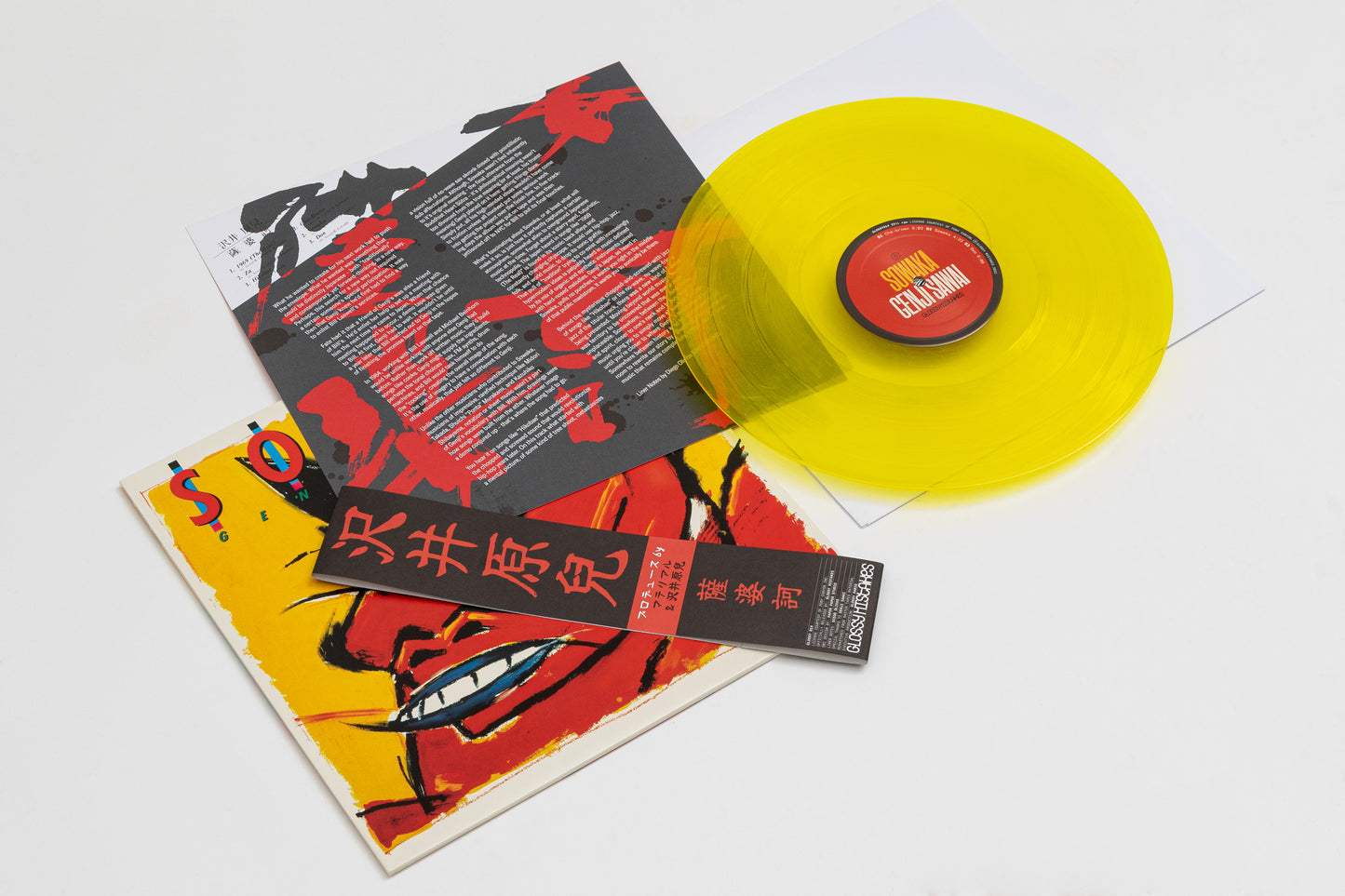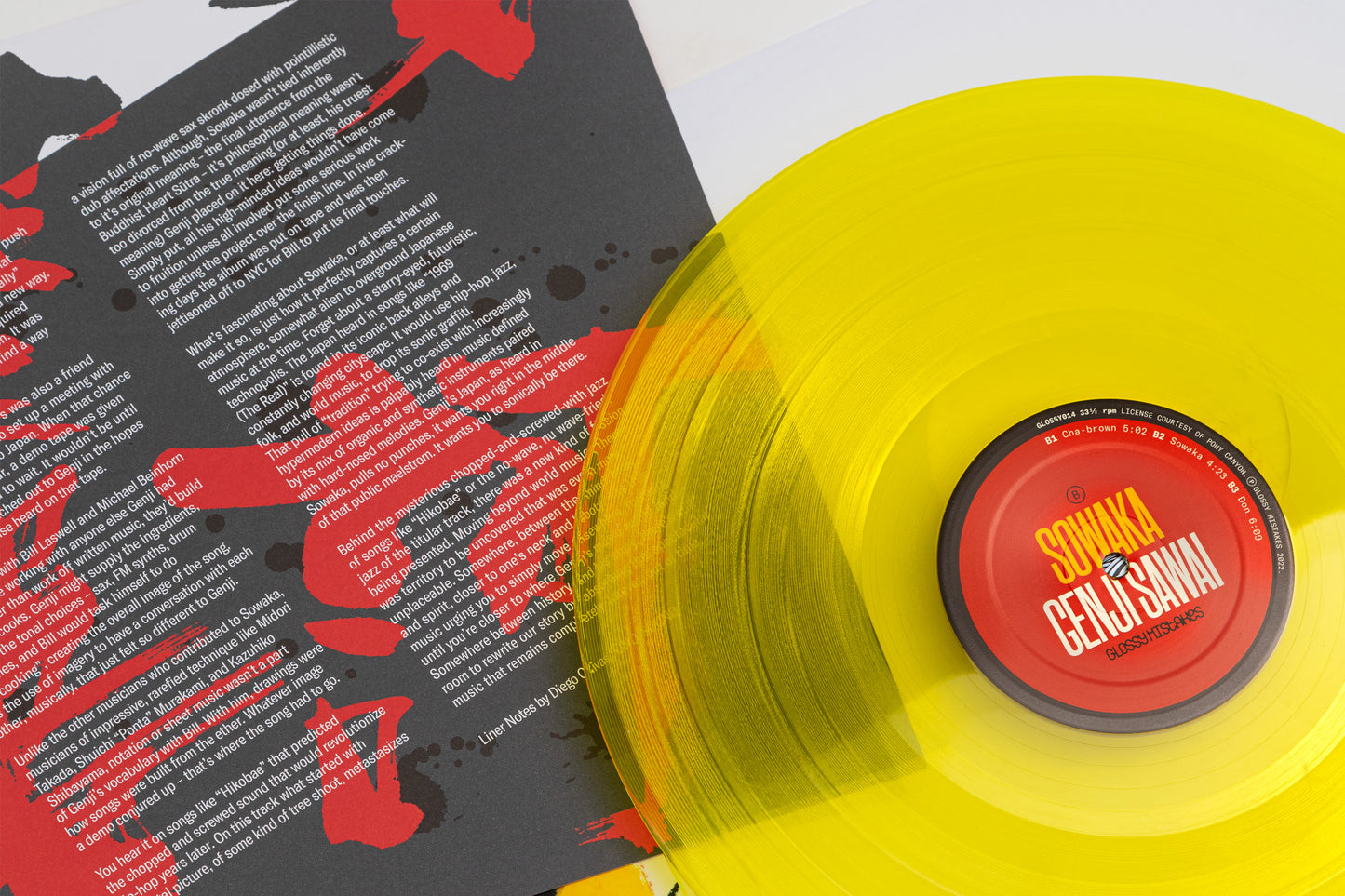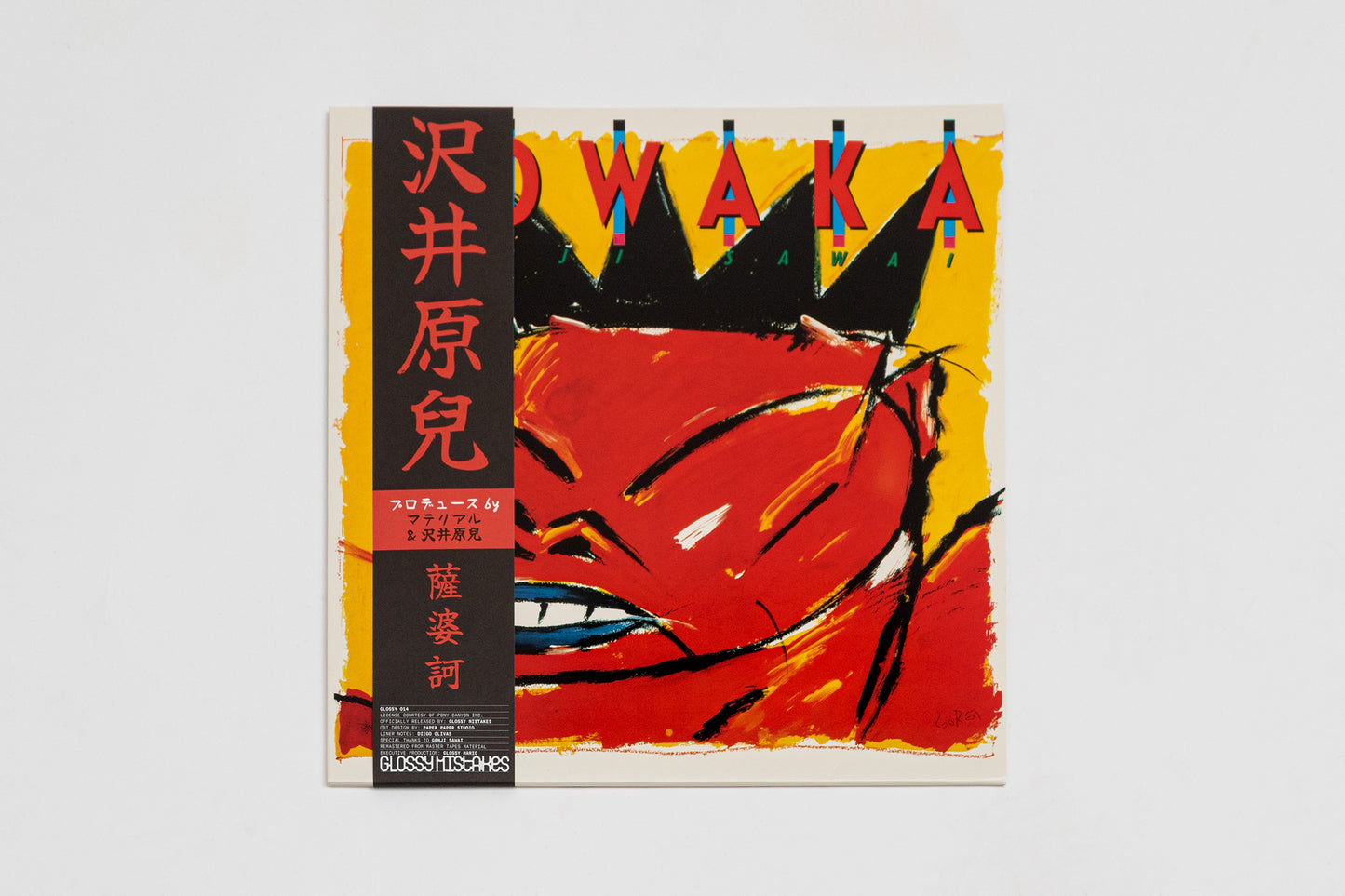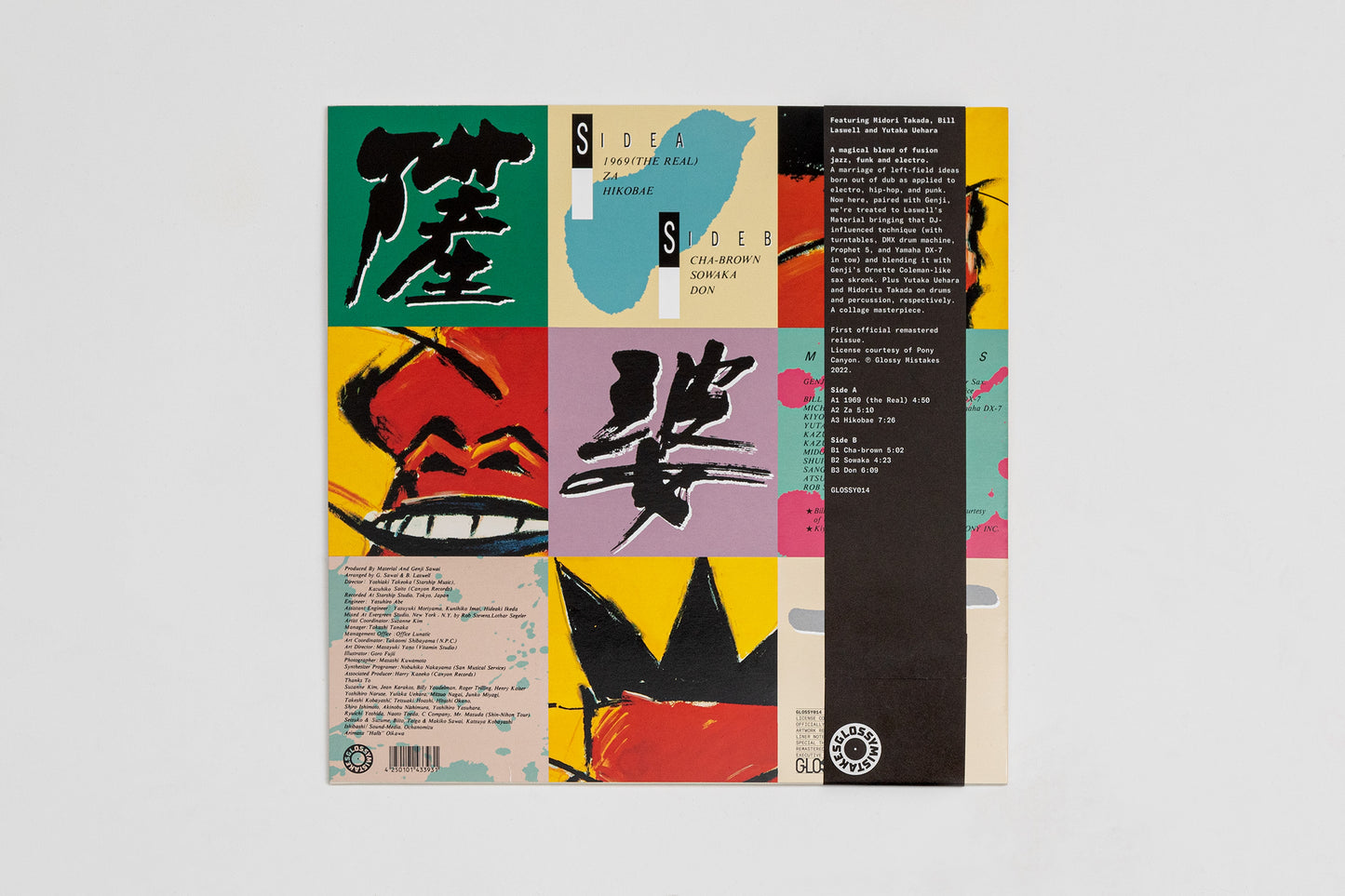Share
Genji Sawai
Sowaka [Import]
Sowaka [Import]
Glossy Mistakes | CAT #: GLOSSY014
- Please read our policy carefully
- Packaged with care in Whiplash Mailer or Equivalent
- Ships within 3-7 Business Days
Couldn't load pickup availability
KEY FEATURES
KEY FEATURES
- First official and remastered reissue
- Featuring Midori Takada and Bill Laswell
- Sought after cult Nippon avant-garde album
- Includes liner notes
DETAILS
DETAILS
ARTIST: Genji Sawai
LABEL: Glossy Mistakes
CAT NO: GLOSSY014
RELEASE DATE:
GENRE / STYLE:
- Electronic
- Avant-Garde
- Jazz
- Avant_Jazz
RELEASE DESCRIPTION
RELEASE DESCRIPTION
Genji Sawai’s classic LP “Sowaka”, featuring Midori Takada and Bill Laswell, reissued for the very first time.
Sowaka, recorded in 1984, displayed an innovative sound that went beyond genre – mixing dub, world, jazz, electro, hip-hop and avant-garde. A perfect match of some of the most experimental artists of that time resulting in an extremely sought-after and singular piece of music of the golden Japanese era. A talented crossover.
In 1984, working with Bill Laswell, Michael Beinhorn and Midori Takada would be unlike working with anyone else Genji Sawai had before, pulling him out of the J-jazz experimental scene he was based on. Rather than work off written music, they’d build songs like cooks. Genji might supply the ingredients, perhaps the tonal choices – sax, FM synths, drum machines, and Bill would task himself to do the “cooking”, creating the overall image of the song. It’s the use of imagery to have a conversation with each other, musically, that just felt so different to Genji.
Unlike the other musicians who contributed to Sowaka, musicians of impressive, rarefied technique like Midori Takada, Shuichi “Ponta” Murakami, and Kazuhiko Shibayama, notation or sheet music wasn’t a part of Genji’s vocabulary with Bill. With him, drawings were how songs were built from the ether. Whatever image a demo conjured up – that’s where the song had to go.
You hear it on songs like “Hikobae” that predicted the chopped and screwed sound that would revolutionize hip-hop years later. On this track what started with a mental picture, of some kind of tree shoot, metastasizes a vision full of no-wave sax skronk dosed with pointillistic dub affectations. Although, Sowaka wasn’t tied inherently to it’s original meaning – the final utterance from the Buddhist Heart Sūtra – it’s philosophical meaning wasn’t too divorced from the true meaning (or at least, his truest meaning) Genji placed on it here: getting things done. Simply put, all his high-minded ideas wouldn’t have come to fruition unless all involved put some serious work into getting the project over the finish line. In five cracking days the album was put on tape and was then jettisoned off to NYC for Bill to put its final touches.
What’s fascinating about Sowaka, or at least what will make it so, is just how it perfectly captures a certain atmosphere, somewhat alien to overground Japanese music at the time. Forget about a starry-eyed, futuristic, technopolis. The Japan heard in songs like “1969 (The Real)” is found in its iconic back alleys and constantly changing cityscape. It would use hip-hop, jazz, folk, and world music, to drop its sonic graffiti. That pull of “tradition” trying to co-exist with increasingly hypermodern ideas is palpably heard in music defined by its mix of organic and synthetic instruments paired with hard-nosed melodies. Genji’s Japan, as heard in Sowaka, pulls no punches, it wants you right in the middle of that public maelstrom. It wants you to sonically be there.
Behind the mysterious chopped-and-screwed-with jazz of songs like “Hikobae” or the no-wave, nu wave-fried jazz of the titular track, there was a new kind of fusion being presented. Moving beyond world music, there was territory to be uncovered that was even more unplaceable. Somewhere, between the mind, body, and spirit, closer to one’s neck and booty, was this music urging you to simply move elsewhere, further, until you’re closer to where Genji’s music would land. Somewhere between history and his story, there’s still room to rewrite our story by absorbing this spectacular music that remains completely, forever, out of time.
TRACKLIST
TRACKLIST
1. 1969 (the Real)
2. Za
3. Hikobae
4. Cha-brown
5. Sowaka
6. Don
LISTEN
LISTEN
CREDITS
CREDITS
ABOUT THE ARTIST
ABOUT THE ARTIST





Let customers speak for us
from 36 reviewsPlays great, looks super cool! This music (and movie) are deeply special to me, so glad you had this on vinyl!

This item came perfectly wrapped and sealed, helix sounds is an amazing seller and I would gladly buy from them again
![The Elder Scrolls V: Skyrim – Ultimate Edition Vinyl Box Set [Import]](https://cdn.shopify.com/s/files/1/0620/6947/3471/files/SL9-2040-1-9-JeremySoule-TheElderScrollsVSkyrim_UltimateEdition_100x100.png?v=1707343674)
For all fans, this is a must-buy. Especially hooked by the track Wind, which is the very first ending of the anime.
![Naruto: Best Collection [Import]](https://cdn.shopify.com/s/files/1/0620/6947/3471/files/3701627800055_100x100.png?v=1684391352)
This album sounds as good and hits as hard as it did when it was released! Extra fun getting it from Helix Sounds, they always have the best stuff :)

The vinyl in great condition got here when expected and sounds amazing
![Risk of Rain 2: Survivors of the Void (Original Soundtrack)[Import]](https://cdn.shopify.com/s/files/1/0620/6947/3471/products/large_550_tmp_2F1646340547505-fnxevnwietp-c54ce13833a2e293d5137eb55e1fc98c_2F00-RoR2-Survivors-of-the-void_Front-Cover_100x100.jpg?v=1666865234)
fast service & quick response, Good+
![Attack on Titan Season 2 (Original Soundtrack) [Import]](https://cdn.shopify.com/s/files/1/0620/6947/3471/products/large_550_tmp_2F1620927439090-opscswqc3n-a3e2017d384efb9ffde2fc9717da64d6_2FANIM0010_2D-cover_5B1_5D_100x100.jpg?v=1703888823)
I got this for my husband as a gift and he really loved it. Great sound and beautiful color. I’m so glad I got this vinyl.

Beautiful vinyl. Good price. Came packaged well.

Really happy with the vinyl box set. It was sent quickly, well packaged and made it to Australia unscathed 😊
![Persona 5 - The Essential Edition [Vinyl Box Set]](https://cdn.shopify.com/s/files/1/0620/6947/3471/files/web_productimage_P5_Vinyl-1_b11d3fd8-5d4d-4d6a-bd38-1942d353ab5a_100x100.png?v=1699814835)
Came exactly as described and in perfect condition, the best shipment service on vinyls I’ve ever had. Fast and accurate, I’ve had records ordered for almost a month with another store and these guys continually beat out all other stores for shipment. I just ordered again from them, highly recommend.
![Mobile Suit Gundam Char's Counterattack (Original Soundtrack) [Japanese Import]](https://cdn.shopify.com/s/files/1/0620/6947/3471/products/large_550_tmp_2F1674511982122-u76t2f474uo-07e57b8213b76a885e041f289cdd74ed_2Fh1_rgb__C5_92y_100x100.jpg?v=1674598327)
The album arrived well packaged, in impeccable condition. Love the service. Love this album!

Great shop, I can only recommend it.

I finally received it. It came well packaged and secure. The customer assistance was great and helpful with my queries.

honestly i was very happy to have this poster come in, and imma buy a frame for it later. the poster is really beautiful and i love it, there was a slight defect to it, no fault to the company, but the mailing service itself, but it doesnt really bother me at all since it’s barely noticeable, i am just so happy to own it!!
![Chappell Roan The Rise And Fall Of A Midwest Princess [Poster]](https://cdn.shopify.com/s/files/1/0620/6947/3471/files/55212_-_Chappell_Roan_The_Rise_And_Fall_Of_A_Midwest_Princess_Poster_100x100.jpg?v=1734263351)







![The Boy And The Heron (Original Soundtrack) [Japanese Import]](https://cdn.shopify.com/s/files/1/0620/6947/3471/files/TJJA-10063-JoeHisaishi-TheBoyAndTheHeron_OriginalSoundtrack_100x100.jpg?v=1714672506)





